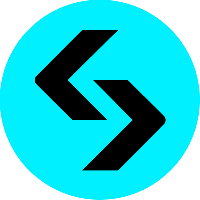Latest Crypto News
Trending now

PUMP Registers First Inflow In 3 Weeks: Is Price Looking At a Rally?
- PUMP registers first inflows in 3 weeks, signaling accumulation after extended selling pressure.
- Squeeze Momentum Indicator shows tightening volatility and shifting bullish momentum.
- Price must break $0.003409 resistance to target $0.003757 and extend recovery further.

Next Stop – The Omnichain Future
Multicoin wallets defined 2021. Standalone apps took over in 2023. Today, in 2025, we’re watching chains intertwine into a living, interconnected system that shares both assets and execution How Bridges Grew Up Cross-chain bridges were initially hobbled contraptions in a messy ecosystem. Assets would be locked on one chain and minted on another, and users

XRP ETFs Extend Streak to 13 Days, $1 Billion Target Now in Sight
- XRP ETFs have extended inflows to 13 consecutive days, reaching $906 million+ in net assets.
- The funds need less than $94 million to cross the $1 billion milestone, possibly this week.
- Growth pace resembles early Ethereum ETF adoption, signaling rising institutional demand.

How Crypto Industry Is Rewriting Rules of Custody, Identity, and Defense in an Era of Automated Threats.
For the better part of a decade, the ethos of cryptocurrency security was distilled into a single, terrifyingly simple mantra: “Not your keys, not your coins.” It was a call to arms for self-sovereignty, placing the burden of bank-grade security onto the shoulders of individuals. But as we move deeper into 2025 and beyond, that
Lead Trader Exclusive Challenges

HTX Research Releases New Report on Prediction Markets: From Structural Constraints to the Future of Attention-Based Financial Infrastructure
HTX Research, the dedicated research arm of leading global crypto exchange HTX, has released its latest report, Prediction Markets: From Structural Bottlenecks to Infrastructure Revolution and the Future of Attention Assets, offering a structured analysis of the foundations, development trajectory, and long-term potential of prediction markets. The study discusses why prediction markets continue to confront

Best Safest Crypto Exchanges in 2026
A quick look at the safest crypto exchanges in 2026, with strong custody, real proof-of-reserves, and transparent risk controls
BeInCrypto × Binance Special Rewards

Peter Schiff to CZ: ‘Bitcoin Payments? They’re Just Liquidated Bets’
- Schiff calls Bitcoin payments “liquidated bets,” arguing users really convert to fiat.
- CZ counters that crypto cards make Bitcoin seamless for payments despite backend conversion.
- Debate exposes core divide between gold-backed stability and digital-asset innovation.

Citadel Securities Turns Against DeFi While Pouring $500 Million into Ripple
- Citadel rejects DeFi exemptions while backing Ripple with a $500 million investment.
- Letter to SEC warns DeFi lacks transparency, AML/KYC controls, and investor protections.
- Support shifts toward regulated blockchain infrastructure as institutions seek compliance clarity.
Welcome offer for new traders

3 Crypto Narratives Surge in December 2025—Top Picks for 2026?
- Crypto card volumes hit records, signaling rapid Web3 neobanking adoption.
- Robotics-crypto tokens gain attention as Washington pivots toward industrial automation.
- Prediction markets surge on AI tools and expanding BNB Chain infrastructure.

XRP Staking Arrives with the Launch of Firelight Protocol
The newly launched Firelight Protocol introduces staking rewards for XRP through a novel on-chain economic security primitive designed to protect DeFi assets from exploits. Enabling New Use Cases for XRP XRP, while being one of the largest crypto assets by market cap, does not have any native staking or yield opportunities. Firelight aims to add




